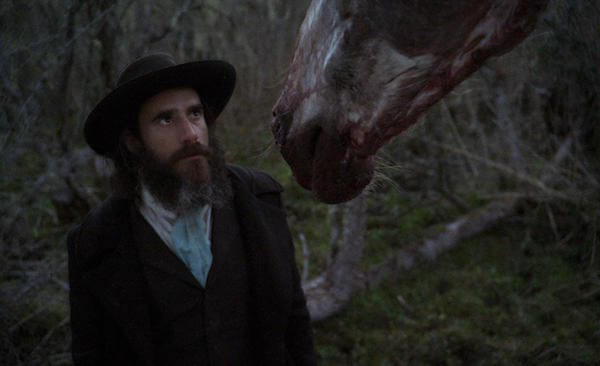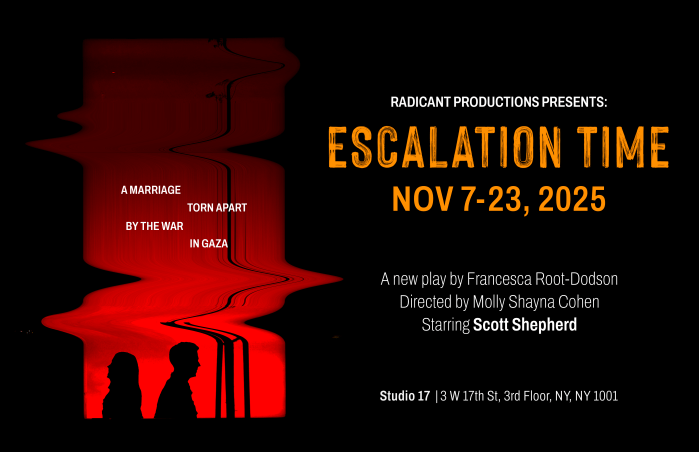Sofia Gala Castiglione in Anahi Berneri’s “Alanis” is the February 28 opening night film. | COURTESY OF FILM SOCIETY OF LINCOLN CENTER
“Neighboring Scenes” ends on the day the 2018 Oscars take place, when the Chilean transgender melodrama “A Fantastic Woman,” which unfortunately turns its heroine’s grief into a voyeuristic wallow, and Mexican-born director Guillermo del Toro’s excellent “The Shape of Water” might take home prizes. In fact, “A Fantastic Woman” is playing alongside this series of new work from Latin America, co-presented by the Film Society of Lincoln Center and Cinema Tropical, across the street at the Film Society’s Elinor Bunin Munroe Film Center. The series, however, includes a number of films that experiment with form more adventurously.
I got to preview two of them, “Rey” and “The Little Match Girl.” Additionally, “Solitary Land” uses found footage to depict the brutality of Easter Island’s colonization, and the documentary “Ruinas tu reino,” a portrait of fishermen’s lives, has been compared to avant-garde North American director Peter Hutton’s work.
In the 2000s, films from Mexico and Argentina made a splash in the US. While Alejandro González Iñarritu’s “Amores Perros” and Alfonso Cuaron’s “Y Tu Mamá También” served as tickets to Hollywood for their directors, Argentine filmmakers like Lucrecia Martel (whose acclaimed “Zama” opens in April) and Lisandro Alonso have stayed at home and continued making uncompromising work. Given that 16 percent of the US population is Latino, we don’t get to see nearly as much Latin American cinema in theatrical release as the strength of recent filmmaking in the region and the potential audience here would demand, despite the continuing arthouse popularity of movies as different as “City of God” and “Embrace of the Serpent” over the past 15 years.
Lincoln Center, Cinema Tropical offer peek at avant-garde fare often absent from US screens
“Neighboring Scenes” might offer your only chance in New York to catch what’s going on in the cutting edge of Argentine and Mexican cinema right now.
The opening night film of “Neighboring Scenes,” Argentine director Anahi Berneri’s “Alanis” (Feb. 28, 7 p.m.), serves up a few very difficult days in a sex worker’s life. There’s little titillation here: in the only fairly explicit sex scene, the title character’s (Sofia Gala Castiglione) dirty talk gradually becomes overtly hostile without her client noticing. The state degrades her more than the men who pay her for sex. In the opening scene, two government inspectors pretending to be johns barge in, arresting her roommate Griselda and subjecting her to a stream of condescending questions that assume no woman could possibly agree to sell sex without a pimp forcing her.
If the narrative structure has hints of the Dardenne brothers’ “Two Days, One Night,” Berneri’s direction shows its own vision. She uses a fairly narrow aspect ratio, filling the screen with clutter and often creating frames-within-frames. Castiglione’s body often takes up half the screen. The actress’ real infant son Dante plays that of her character. A scene where Alanis is interrogated implicitly parallels the spectator’s desire to learn more about her with the cops’ more authoritarian demands to control her life. The film’s final 20 minutes suffer from the notion that a film about sex work must contain violence, but “Alanis” is otherwise fairly respectful and shows Berneri’s skill at imagining her character’s world.
Hans Christian Andersen’s fable “The Little Match Girl” has inspired so many films that MoMA once did a series showing them. Argentine director Alejo Moguillansky’s latest movie (Mar. 2, 9:15 p.m.) takes its title from Andersen’s story and incorporates chunks of it into the narrative, both depicting its protagonist, Marie (María Villar), doing an audio recording of it, and showing a montage of small girls lighting and blowing out matches. Moguillansky takes a postmodernist approach to high culture, throwing a wild array of material against the wall and hoping it all sticks. He uses wall-to-wall classical music (plus Ennio Morricone), includes images of a child watching Robert Bresson’s “Au hasard Balthazar,” and mixes the stories of a composer trying to create an opera with that of a now-elderly pianist relating his correspondence with German radical Gudrün Ensslin during the counterculture era.
Alejo Moguillansky’s “The Little Match Girl” screens on March 2. | COURTESY OF FILM SOCIETY OF LINCOLN CENTER
Moguillanksy’s “The Little Match Girl” has a charm akin to his gay compatriot Matias Piñeiro’s films about female college students engaging with Shakespeare. The director tends to favor close-ups, usually taken from a static camera. The political references do seem somewhat shallow — I suspect one has to be Argentine to fully understand them — but “The Little Match Girl” becomes something more than a collage and less than a totally coherent narrative while remaining entirely engaging the whole time.
Chilean director Niles Atallah’s “Rey” (Mar. 3, 9 p.m.) tries to find a new visual language to describe the madness of colonialism. His film begins with Super-8 footage, full of simulated scratches and sound crackles. Portions of “Rey” feel like a fairly naturalistic ‘70s revisionist Western, in which French lawyer Orélie-Antoine de Tounens (Rodrigo Lisboa) interacts with the indigenous Mapuche tribe. The actors seem to be non-professionals portraying their ancestors. However, the rest of the film does serious damage to the idea of following a straightforward and believable narrative.
Rodrigo Lisboa in Niles Atallah’s “Rey,” which screens on March 3. | COURTESY OF FILM SOCIETY OF LINCOLN CENTER
For most of the first 10 minutes, all the actors wear clay masks and interact inside an obviously constructed indoor set. This contrasts with Benjamin Echazarreta’s evocative, misty outdoor cinematography. The closer Orélie comes to realizing his dreams of taking over the Mapuche nation — over and over he repeats the word “rey,” Spanish for “king” — the more he steers away from sanity. The film’s final half hour is a crescendo to an ending with a psychedelic montage of kaleidoscopes as Orélie mutters “Soy rey” obsessively.
All this adds up to less than the sum of its parts. The film’s political statements about colonial racism stick with one less than its bizarre and imaginative imagery. In a North American context, Jim Jarmusch’s “Dead Man” does much of what “Rey” tries to, without going to such experimental extremes.
NEIGHBORING SCENES | Feb. 28-Mar. 4 | Film Society of Lincoln Center, Walter Reade Theater, 165 W. 65th St. | $15; $12 for students & seniors at https://www.filmlinc.org/festivals/neighboring-scenes-new-latin-american-cinema/#films








































